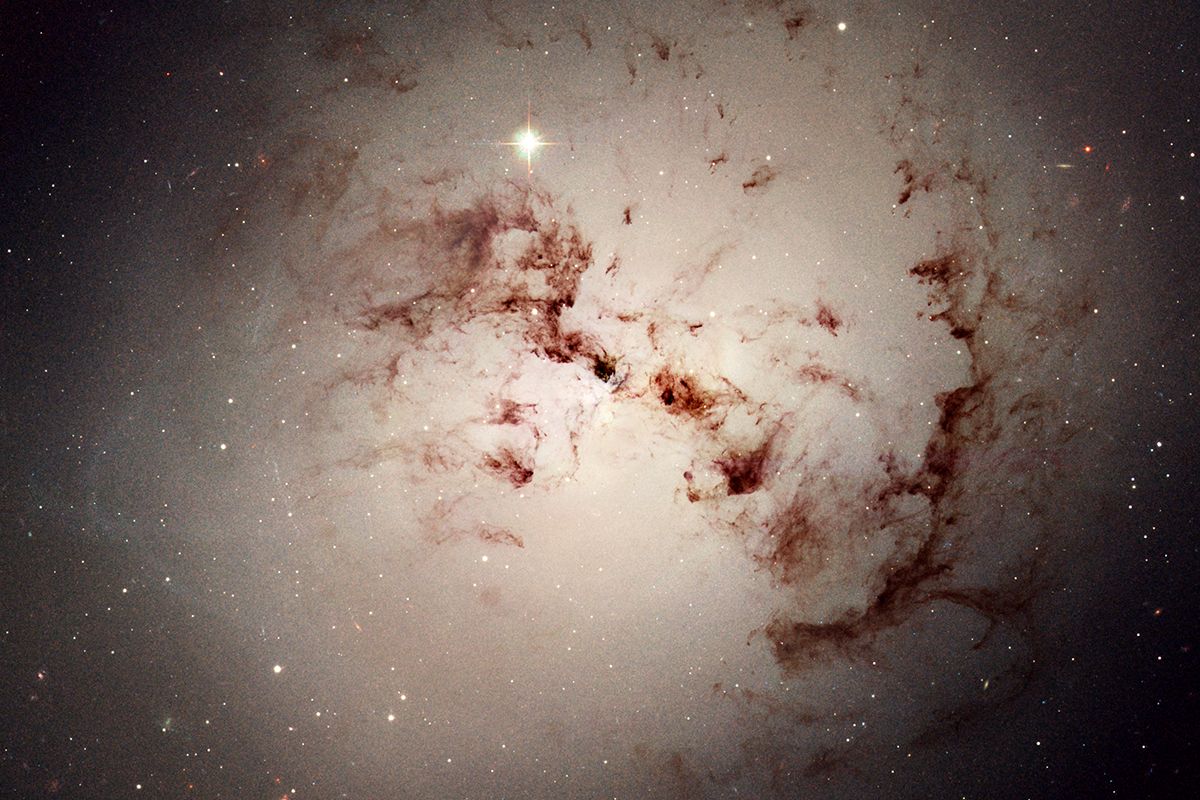
Cosmic dust might sound like something out of a sci-fi movie, but it's very real and incredibly important. What is cosmic dust? Cosmic dust consists of tiny particles floating in space, often smaller than a grain of sand. These particles come from comets, asteroids, and even exploding stars. They play a crucial role in forming planets, moons, and other celestial bodies. Without cosmic dust, our solar system wouldn't look the same. These tiny specks also help scientists understand the universe's history and composition. From creating stunning meteor showers to influencing climate on Earth, cosmic dust is more than just space debris. Ready to learn more? Let's dive into 26 fascinating facts about cosmic dust!
What is Cosmic Dust?
Cosmic dust, also known as space dust, is a fascinating component of the universe. These tiny particles float through space, contributing to the formation of stars, planets, and other celestial bodies. Let's dive into some intriguing facts about cosmic dust.
-
Cosmic dust particles are incredibly small, often less than a micrometer in size. Despite their tiny size, they play a significant role in the universe.
-
These particles are composed of various elements, including carbon, silicon, oxygen, and metals like iron and magnesium.
-
Cosmic dust can be found throughout the universe, from the interstellar medium to the atmospheres of planets.
-
The Milky Way galaxy alone contains an estimated 100 million solar masses of cosmic dust.
-
Cosmic dust particles can travel at speeds of up to 70 kilometers per second.
How is Cosmic Dust Formed?
The formation of cosmic dust is a complex process involving various astronomical events. Here are some key facts about how cosmic dust is created.
-
Cosmic dust is often formed in the outer layers of dying stars, such as red giants and supernovae.
-
When these stars explode, they release vast amounts of dust into space, enriching the interstellar medium.
-
Cosmic dust can also form in the dense regions of molecular clouds, where new stars are born.
-
Collisions between asteroids and comets can produce cosmic dust particles.
-
Some cosmic dust originates from the debris left behind by comets as they travel through the solar system.
The Role of Cosmic Dust in Star Formation
Cosmic dust plays a crucial role in the formation of stars and planetary systems. Here are some fascinating facts about its involvement in these processes.
-
Cosmic dust particles act as the building blocks for new stars and planets by providing the necessary material for their formation.
-
Dust particles help cool down the gas in molecular clouds, allowing gravity to collapse the cloud and form new stars.
-
Cosmic dust can absorb and scatter light, making it difficult for astronomers to observe certain regions of space.
-
The presence of dust in protoplanetary disks around young stars is essential for the formation of planets.
-
Dust grains can stick together and grow into larger particles, eventually forming planetesimals and, later, planets.
Cosmic Dust and Its Impact on Earth
Cosmic dust not only affects the universe but also has an impact on our planet. Here are some interesting facts about how cosmic dust interacts with Earth.
-
Every day, Earth is bombarded with about 100 tons of cosmic dust particles.
-
These particles can enter Earth's atmosphere and create meteors, commonly known as shooting stars.
-
Cosmic dust can influence Earth's climate by affecting the amount of sunlight that reaches the surface.
-
Some cosmic dust particles contain organic compounds, which may have played a role in the origin of life on Earth.
-
Scientists study cosmic dust collected from the upper atmosphere to learn more about the composition and history of our solar system.
Studying Cosmic Dust
Researchers use various methods and tools to study cosmic dust and uncover its secrets. Here are some facts about how scientists investigate these tiny particles.
-
Space missions, such as NASA's Stardust mission, have collected samples of cosmic dust for analysis.
-
Ground-based telescopes equipped with infrared detectors can observe cosmic dust in distant regions of space.
-
Laboratory experiments simulate the conditions of space to study the properties and behavior of cosmic dust particles.
-
Scientists use computer models to understand how cosmic dust interacts with light and other matter in space.
-
Cosmic dust particles are often collected from the Antarctic ice, where they are well-preserved and easier to study.
-
By studying cosmic dust, scientists can gain insights into the processes that shape the universe and the origins of stars and planets.
Cosmic Dust: More Than Meets the Eye
Cosmic dust isn't just space debris; it's a key player in the universe's grand story. These tiny particles help form stars, planets, and even life itself. They carry elements like carbon and iron, essential for creating new celestial bodies. Cosmic dust also influences the light we see from distant stars, making it a crucial factor in astronomical observations.
Scientists study cosmic dust to understand the universe's history and evolution. Missions like NASA's Stardust have collected samples, providing valuable insights. These particles also impact Earth's climate by affecting cloud formation and weather patterns.
In short, cosmic dust connects us to the cosmos in ways we’re just beginning to understand. From shaping galaxies to influencing our planet, these tiny particles hold big secrets. Keep looking up; the universe has more to reveal.
Was this page helpful?
Our commitment to delivering trustworthy and engaging content is at the heart of what we do. Each fact on our site is contributed by real users like you, bringing a wealth of diverse insights and information. To ensure the highest standards of accuracy and reliability, our dedicated editors meticulously review each submission. This process guarantees that the facts we share are not only fascinating but also credible. Trust in our commitment to quality and authenticity as you explore and learn with us.
